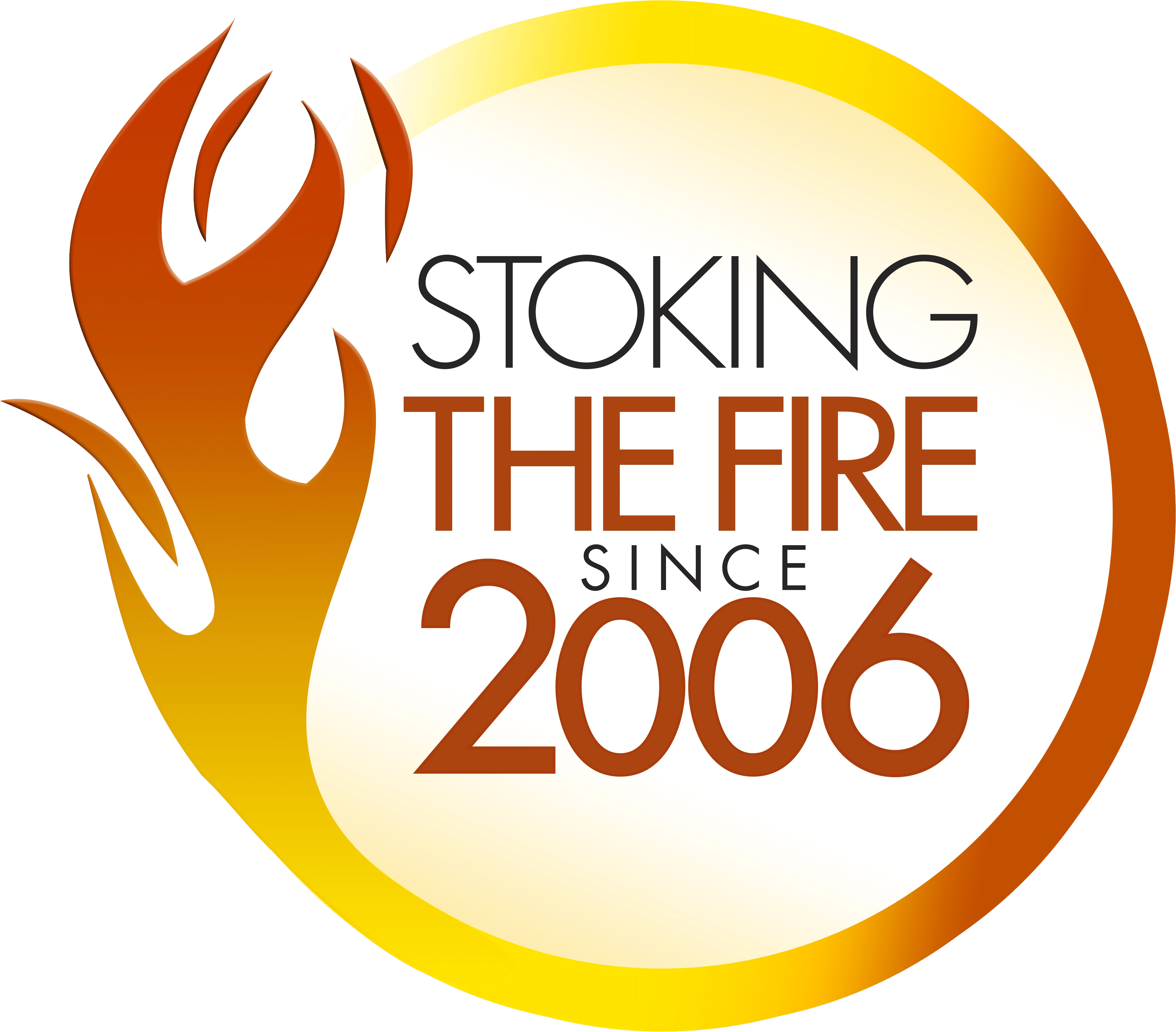In January, Karen E. Pfeffer, co-founder of Fire Power Seminars, found herself surrounded by color, creativity, and soul-deep reflection at an art retreat in Mazatlán, Mexico. “Wings of Transformation” was guided by artist and mentor Nadine Hamil, founder of Artful Dreamers Studio. As brush met canvas, Karen felt a new wave of inspiration to express one of her greatest passions: the art of communication. Born in South America to a father from Kansas and a mother from Puerto Rico, Karen has always lived at the intersection of cultures, perspectives, and languages. That mosaic of experience has shaped the way she teaches communication – not just as a skill, but as an expressive, connective art form that can build bridges, break barriers, and change lives.

Much like art, communication is layered with meaning. It holds the power to inspire, soothe, energize, or disarm. And just as no two artists paint in the same way, no two people communicate from the same place. We each bring our unique colors – our beliefs, upbringing, culture, emotions, and lived experiences – to the canvas of conversation.
Karen’s approach to communication isn’t about perfection. It’s about presence. It’s about listening with intention (It’s no accident that silent and listen are spelled with the same letters), speaking with compassion, and creating space where everyone feels seen, heard, and valued. Whether you’re a corporate leader, a community volunteer, a retiree, or someone navigating new chapters of life, communication is the bridge to deeper understanding, stronger relationships, and personal empowerment.
Why Communication is the Core of Effective Leadership
At its best, communication builds bridges. It creates clarity, fosters trust, resolves conflicts, increases productivity, and uplifts emotions. When communication breaks down, the opposite occurs—confusion rises, relationships deteriorate, and stress spreads like wildfire.
Karen emphasizes that communication isn’t just about transmitting information – it’s about creating value for both the sender and receiver. Whether in-person, virtual, or hybrid settings, the intent behind words, tone, and body language can shape outcomes in powerful ways.
“Effective communication is a process… when done with awareness and care, it builds on relationships and brings out each other’s strengths.”
~ Karen E. Pfeffer
The Communication Loop
Communication is never a one-way street. It’s a dynamic loop where what you do influences another person, and vice versa. Your tone, body language, and energy all create ripple effects.
“The single biggest problem in communication is the illusion that it has taken place.” ~ George Bernard Shaw
The following humorous story underscores why we must practice clarity, check for understanding, and be present in every communication exchange:
A manager once told her team, “We need to improve communication around here.” Everyone nodded. The next day, she emailed,
“Let’s meet briefly at 9am.”
By 9:03am, only one person had shown up—carrying a box of muffins.
Turns out, “meet briefly” was interpreted in five different ways:
- One person thought it meant a Zoom meeting.
- Another thought it was optional.
- Someone thought it was canceled because there was no calendar invite.
- Another person thought it was code for “bring breakfast.”
- And the last person was still at their desk waiting to be told where the meeting was.
Moral of the story? Everyone thought communication had taken place… and George Bernard Shaw just nodded knowingly from the great beyond.
This emphasizes a presupposition of communication: Communication is determined by the receiver!

The Power of Nonverbal Communication
While words carry meaning, research shows they only account for 7% of communication. The rest is all about tonality (38%) and physiology (55%) – your voice, your facial expressions, your posture, and your energy. (Source: Dr. Albert Mehrabian, UCLA)
Your body language, even in virtual meetings, tells a story. Are you making eye contact? Are your shoulders engaged? Are you smiling? Are you preoccupied with your mobile phone?
“A smile increases your face value.” ~ Karen E. Pfeffer
In today’s virtual reality, showing up with intentional energy, animated expressions, and conscious posture becomes even more important. It’s not just about showing up – it’s about how you show up.
Communication is Determined by the Receiver – Filtered Through Perception
We don’t see the world as it is – we see it as we are. Our communication is filtered through personal experiences, our senses, beliefs, values, interests, cultural backgrounds, assumptions and emotions. Our perceptual filters are the invisible lenses we each wear. We create our own unique reality through our perceptual filters.
This concept is especially critical for cross-cultural communication. A simple gesture like a thumbs-up or a handshake may carry vastly different meanings across cultures. Awareness of these filters allows people to connect more meaningfully with diverse teams.
“If you change the way you look at things, the things you look at change.”
~ Wayne Dyer
Building Rapport: The Secret to Influence
Ever tried to get through to someone and felt like you were speaking different languages? That’s where rapport comes in.
Rapport is the foundation of influence. It builds trust, reduces conflict and enables open dialogue. Building rapport involves being congruent – aligning words, tone, and body language so they all convey the same message.
You build rapport by curiously stepping into the other person’s model of the world. Curiosity keeps you flexible, and flexibility creates space for deeper, more effective communication.
It’s about discovering what you have in common while honoring the differences that make each person unique.
The more rapport, the stronger a connection. It’s that simple, powerful and profound.
Manage Your State, Master Your Message
One of the most transformative lessons Karen shares is the idea that the way you use your body determines how you feel. If you want to show up as a confident leader, you must manage your internal state, your posture, gestures, internal dialogue, and imagery.
If you’re slouched, breathing shallowly, and stuck in negative thoughts, your communication will reflect that. Shift your body, shift your thoughts, and you’ll shift your state. It’s a powerful feedback loop.

Here are six components to manage your state:
- Posture – How are you standing or sitting?
- Gestures – What is your body saying?
- Internal Kinesthetic – What sensations are you feeling?
- Internal Dialogue – What are you telling yourself?
- Internal Images – What are you visualizing?
- Sensory Triggers – Are any tastes or smells influencing your mood?
Watch Your Language: Words Shape Worlds
Language is a powerful tool or can be a dangerous trap. Patterns we use in speech influence not only how others perceive us but also how we see ourselves.
To communicate more effectively, become aware of language patterns, such as:
- “I’ll try” (which leaves room for failure; it is a yes or no?)
- “Yes, but …” (which negates everything said before it)
- “Should” (which creates guilt or judgment)
- “Always/Never/Everyone/Nobody” (which oversimplifies complex situations)
Instead, use empowering, specific language. Ask questions like:
- What would success look like, sound like or feel like?
- How can we approach this differently?
- Who else can contribute to this solution?
The words we choose can either lift people up or shut them down.
“Watch your thoughts, they become words. Watch your words, they become actions. Watch your actions, they become habits. Watch your habits, they become character. Watch your character, for it becomes your destiny.” ~ Frank Outlaw
Our words, thoughts and beliefs create specific results. If you choose, you can shift or change your perceptions and reality by transforming your thoughts and words.
Communicating with Diverse Learning and Communication Styles
Not everyone communicates or processes information the same way. We all tend to favor a certain ‘modality’ – the way we take in and express information. Some people are visual (see), others auditory (hear), kinesthetic (feel), or even olfactory (smell) or gustatory (taste). While that may sound surprising, think about how some people use phrases like:
- “That report looks great.” (Visual)
- “That doesn’t sound right.” (Auditory)
- “That feels like we’ll really need to grasp it.” (Kinesthetic)
- “That smells fishy to me.” (Olfactory)
- “That seems like a delicious way to go.” (Gustatory)
By becoming aware of these preferences, we can tailor our communication for stronger connection and understanding. Matching someone’s preferred language style builds instant rapport and creates deeper resonance. Notice the words people use in emails, conversations, even texts. They offer valuable insight into their preferred way of processing and expressing information.
The Richness of Communication Channels
Not all communication channels are created equal. In-person is going to yield the richest conversation, followed by seeing and hearing someone virtually through video calls and phone calls. Emails, texts, and social media posts can be quite challenging depending on the generation and the perceptual communication filters being used.

And then … there are emojis — the modern-day hieroglyphics of digital communication. 😂 While they can add flair, soften tone, or turn a “no” into a “no 🙃,” they’re also wildly open to interpretation. One person’s 👍 is another person’s passive-aggressive brush-off. And don’t even get started on the generational emoji gap — what Boomers use sincerely, Gen Z might read as sarcasm. In short: emojis can enhance a message, but they can’t carry one. For example, a manager responding to a heartfelt resignation with just a thumbs-up emoji, meant as “Got it, best of luck”, can be interpreted as “Cool, don’t let the door hit you.” Yikes!
Each medium has its place, and awareness is key. Complex conversations or emotionally charged topics should not be reduced to email chains. Use the richest form of communication possible, especially when relationships, tone, or context matter.
Navigating Conflict with Clarity and Calm
Conflict isn’t always bad – it’s often the birthplace of innovation and growth. Yet conflict avoidance, name-calling, assumptions, or generalized statements (like “You always do this”) can damage trust.
Productive conflict resolution starts with:
- Owning your feelings: “When you said ____, I felt ____.”
- Avoiding blame or mind-reading
- Speaking calmly and one topic at a time
- Never communicating in the heat of anger
- Asking for what you really want using clear “I” statements
These conflict communication tips and strategies can de-escalate tension and create psychological safety within teams.
Empowering Team Communication
Asking empowering team questions can open up meaningful conversations, beginning questions with what, who and how (why questions are best when tied to purpose – Why do we want to do this?):
- What can we do differently?
- Who do we know that can assist us?
- How can we build a culture where we can freely question and update?
Empowering questions enable participants to engage in everyday conversations that enhance relationships and team culture.
Communication is a Practice – Progress vs Perfection
The spirit of transformational communication is not about getting it perfect, it’s about practicing awareness and showing up with intention.
Whether you’re a seasoned executive or an emerging leader, communication is your most powerful leadership tool. When you speak with clarity, listen with empathy, and act with congruence, you don’t just manage people, you influence and move them.
Final Thoughts
Karen E. Pfeffer’s work through Fire Power Seminars continues to ignite change for organizations, teams and individuals. Her approach to communication is not only grounded in theory and neuroscience but also practical, experiential, and deeply human.
By embracing communication as a vehicle for empowerment, individuals and leaders can transform both the way they interact and the way they lead.
Want practical strategies you can use right away? Check out Karen’s article on 5 Tips to Communicating More Effectively.
Interested in learning more? To discover your communication preferences and how you can enhance your effectiveness, reach out to karen@firepowerseminars.com. She will provide you with a brief assessment where you will learn your preferred communication style for learning.
To learn more about Fire Power Seminars communication and empowerment workshops can help you, your company or organization, visit https://firepowerseminars.com/communication-seminars.
If interested in learning more about Nadine Hamil/ Artful Dreamers Studio art retreats, visit https://www.artfuldreamers.com/offerings


